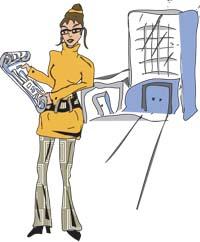 Engineering no longer refers to nuts, bolts and robotics. Today, fields such as entertainment, computer science, space exploration, biology, city design, environmental science and advocacy, transportation, and humanitarian sciences utilize engineers who understand inner workings and can design ways to improve current operations.
Engineering no longer refers to nuts, bolts and robotics. Today, fields such as entertainment, computer science, space exploration, biology, city design, environmental science and advocacy, transportation, and humanitarian sciences utilize engineers who understand inner workings and can design ways to improve current operations.
According to engineer Sean McGrath, “An engineer is someone who can take a simple idea and see through it to the bottomless pits of messy, complexity that lies underneath.” In other words, engineers are the “do-ers” that take abstract ideas and morph them into something tangible.
Yet, less than 2 percent of college graduates earn degrees in an engineering-related field. And, only a miniscule percentage of these graduates are women. This might be in part due to a lingering misconception that all an engineer does is “fix things.” Not true. (Even The Walt Disney Company has upgraded their engineers to “Imagineers,” demonstrating how the role of an engineer relies upon imagination just as much as implementation.)
However, there are specific segments of the field that attract female engineers. Agricultural Engineering is an interesting science, but don’t think the field is limited to crops and livestock. Quite the opposite; most agricultural engineers are employed by large greenhouse companies. It is their duty to build nutrient systems, design growing mediums for the crops, manage temperature and irrigation computer systems, and create blueprints for how the entire operation will look. In show greenhouses (i.e., places that welcome visitors, such as a botanical garden), an engineer’s role is vital. While plant scientists, landscape artists and horticulturalists ensure the growth of healthy plants, the agricultural engineer is the one who actually creates the attraction through AutoCAD drawings and lots of computer programming. And when trouble occurs, it is the agricultural engineer that designs experiments to determine the cause, studies possible solutions, and implements the solution.
Bioengineers combine a variety of fields into their specialty. Chemistry, physics, biology, genetics — all are required in bioengineering roles. A common misperception about bioengineers has been spurred on by the recent debate over cloning. But genetic recombination is only one small sect of the field. USDA scientists Delores Lomberk and Ceil Muller have been toiling away at improving certain fruit plants, working on adapting plants to smaller growing spaces while still producing the same amount of fruit. For countries with dry or limited soil, discoveries like these could save thousands of people from starvation.
One field that has always relied on a strong female work force is telecommunications. From the first telegraph stations, to phone operators, to radio personalities, women have made their mark in this field since the late 1800s. It was Erna Schneider Hoover who, seeing an opportunity to improve current technology, designed a computer system that could monitor incoming phone calls and automatically connect the call without requiring an operator’s assistance. In another field of telecommunications, Fran Allen designed the first supercomputer compilers, which paved the way for the modern PC.
Women engineers have become successful leaders in government, business, law, and medicine, utilizing their knowledge and skills to improve the world we all inhabit. While doing this, they have had to fight for their right to belong to such a male-dominated field, asserting their rights for equality, and fending off disrespect and hostility. Some women have even had to challenge major universities, such as Texas A&M, to receive the same educational documentation and certification as the male students did. Although the 21st century has seen a marked decline in these inequalities, they do still exist. But these women preserve, as they always have, and just engineer themselves the passion and drive they need to succeed.
The Extraordinary Women Engineers Project, an awareness and outreach program designed to encourage young women to choose engineering as a career (http://www.engineeringwomen.org), perhaps sums up women’s role in the engineering world the best: “We live in an exciting, complex world where the need for women’s creativity and know-how has never been greater. Why? Because women hold unique insights into what’s important in this world. And, women have a unique approach to solving problems. One viewpoint or one way of thinking is no longer adequate.”
